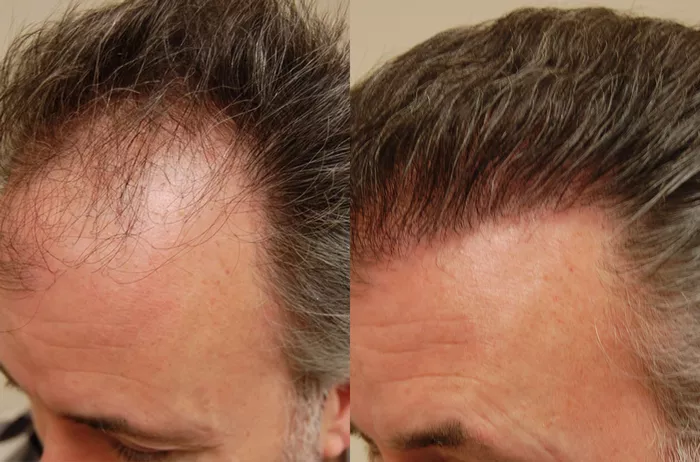Hair loss can be a distressing experience, impacting self-esteem and confidence. Fortunately, hair transplant procedures have emerged as an effective solution for individuals seeking to restore their hair and address baldness. However, a common question that arises is how many hair transplants a person can have. In this article, we will delve into the factors and considerations for multiple hair transplant procedures, shedding light on the limitations and possibilities for individuals seeking ongoing hair restoration.
Factors Affecting the Number of Hair Transplants
The number of hair transplants a person can have depends on various factors, including the individual’s hair loss pattern, donor hair availability, scalp laxity, and overall hair restoration goals. It is important to note that the following factors are general considerations, and the final decision should be made in consultation with a qualified hair transplant surgeon.
1. Hair Loss Pattern and Progression
The hair loss pattern and progression play a significant role in determining the number of hair transplants a person can have. Some individuals experience gradual hair loss over time, while others may have more advanced or aggressive hair loss. The extent and stability of hair loss should be evaluated before proceeding with additional procedures. It is generally recommended to wait until the hair loss pattern has stabilized before considering further transplantation.
2. Donor Hair Availability
Donor hair availability is a crucial factor in determining the number of hair transplants. Donor hair is typically harvested from the back and sides of the scalp, which are known as the permanent donor areas. These areas are resistant to the effects of male pattern baldness. The amount of donor hair available will depend on the individual’s natural hair density, the donor area’s size, and the previous hair transplant procedures, if any. Adequate donor hair supply is necessary to achieve satisfactory results in subsequent procedures.
3. Scalp Laxity
Scalp laxity refers to the flexibility and looseness of the scalp. It is an important consideration for multiple hair transplants because it determines the amount of skin that can be safely excised and sutured during the procedure. Scalp laxity varies among individuals, and it may decrease with each subsequent procedure. Limited scalp laxity can affect the number of grafts that can be harvested and transplanted in future procedures.
4. Healing Capacity and Scar Formation
The healing capacity and scar formation of an individual also impact the number of hair transplants they can have. Some individuals have a robust healing response and minimal scarring, allowing for multiple procedures with satisfactory results. However, others may be prone to excessive scarring or have compromised healing, which can limit the number of subsequent hair transplant procedures. A thorough evaluation of the individual’s healing capacity is crucial before proceeding with additional surgeries.
Considerations for Multiple Hair Transplants
While the number of hair transplants a person can have is influenced by the factors mentioned above, there are several considerations that individuals should keep in mind:
1. Realistic Expectations
It is essential to have realistic expectations regarding the outcome of multiple hair transplant procedures. Each procedure has limitations in terms of the number of grafts that can be transplanted and the coverage achieved. Discussing your goals and expectations with a qualified hair transplant surgeon can help set realistic expectations and determine the feasibility of multiple procedures.
2. Time Gap Between Procedures
The time gap between hair transplant procedures is crucial for several reasons. Firstly, it allows the transplanted hair to grow and establish itself before considering additional transplantation. Secondly, it ensures that the scalp has adequate time to heal and recover from the previous surgery. The time gap between procedures may vary but is typically several months to a year or more.
3. Gradual Approach
Hair restoration is often approached gradually, especially when multiple procedures are involved. The surgeon may recommend starting with a conservative approach and evaluating the results before proceeding with additional surgeries. This allows for adjustments in the treatment plan based on the individual’s response and the potential need for additional grafts.
4. Combined Techniques and Treatments
In some cases, individuals may benefit from a combination of hair transplant techniques and other hair restoration treatments. This approach can optimize the results and potentially reduce the need for multiple surgeries. Non-surgical treatments such as medication, low-level laser therapy, or platelet-rich plasma (PRP) may be recommended to complement hair transplant procedures.
Conclusion
The number of hair transplants a person can have depends on various factors, including the hair loss pattern, donor hair availability, scalp laxity, healing capacity, and individual goals. While there are limitations and considerations for multiple procedures, many individuals can undergo more than one hair transplant to achieve their desired hair restoration goals.
Consulting with a qualified hair transplant surgeon is crucial to determine the feasibility and recommended approach for multiple hair transplants. The surgeon will evaluate the individual’s specific circumstances, assess donor hair availability, consider scalp laxity, and provide personalized recommendations. By understanding the factors and considerations involved, individuals can make informed decisions about their hair restoration journey and work towards achieving a natural-looking and satisfying outcome.
Related topics:
- Does hair transplant hurt: A Simple Guide
- The Efficacy of Hair Transplants: Does Hair Transplant Work?
- How long does a hair transplant take: A Full Guide


